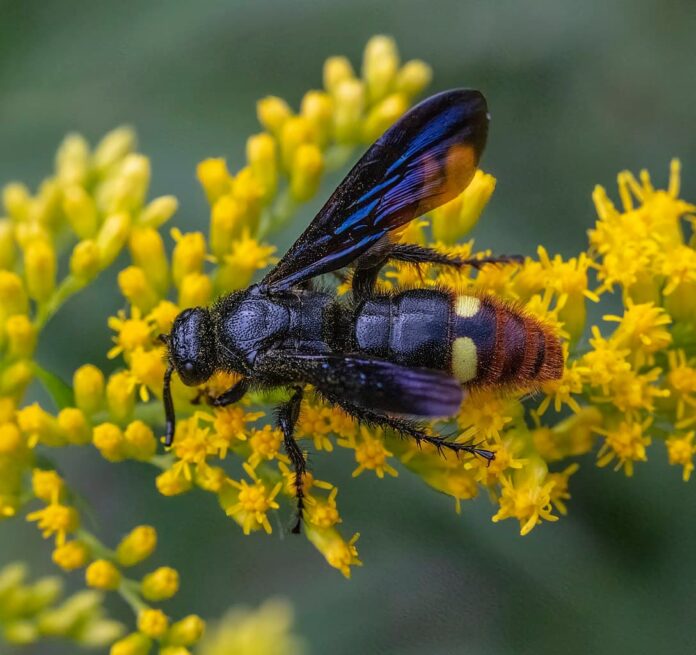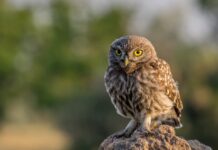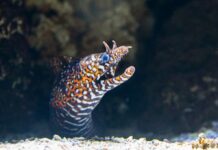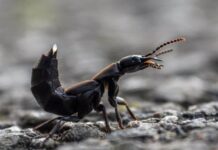Blue-winged wasp aka two-spotted scoliid wasp, is a wasp species with a very eye-catching and interesting appearance. This wasp is non-aggressive and solitary, and they will not attack you. Beauty and calmness, this insect is clearly one of a kind. There is still very little information about the blue-winged wasps, but let’s see what we have below.
1Appearance
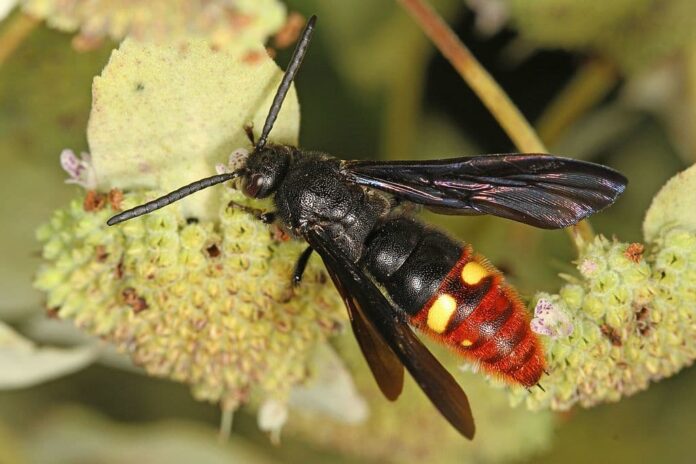
Being pretty small, a blue-winged wasp is only around 2 to 2.5 centimeters long, and its coloration is everything. It has a black body, but the second and third abdominal segments of its body are reddish-brown. This fuzzy reddish-brown or rusty patch covers the rest of the wasp’s abdomen. On each of the abdomen, there is a yellow spot, and the whole body is usually hairy. As for the wings, they are deep and iridescent blue-black in color, with blueish reflections, while the head is also blueish-black. Adult blue-winged wasps have black antennae, and males have longer antennae than females.
2Behavior
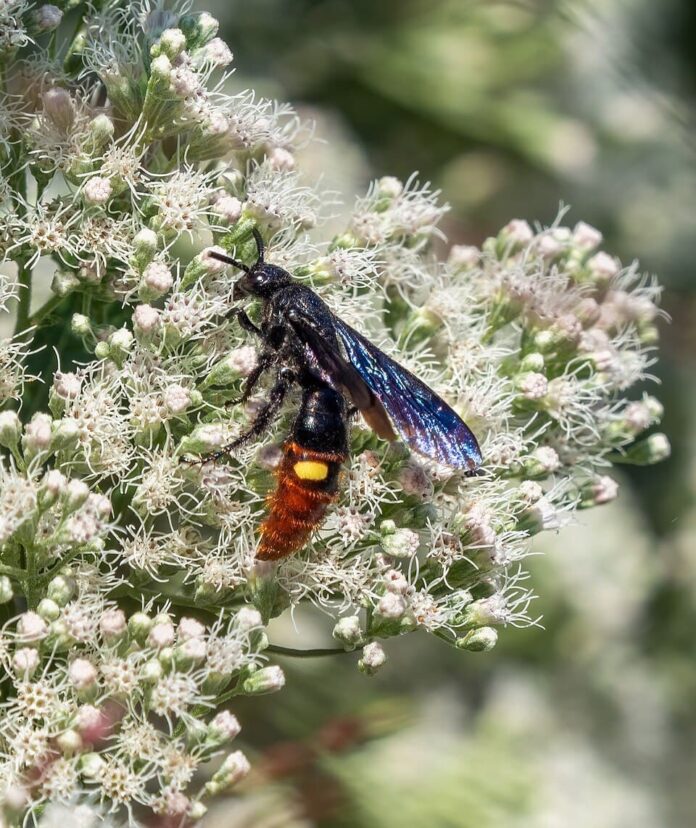
Blue-winged wasps are solitary, and they only come together to mate. Females of this species are more fascinating when it comes to behavior, and here’s why. They burrow into the ground using their mandibles and spiny legs to search for grubs, particularly green June beetles, but also other beetles. Once they find one, they sting it in the neck, and then burrow even further into the ground to construct a cell. There, is where the females lay an egg on the grub that they just stung. That one egg will hatch inside the body of the host, and feed it from inside out. The larvae feed on the grub for about a week, and then spin a cocoon. It overwinters in this pupal state, and emerges as an adult after around 3 weeks. Adult blue-winged wasps only live for one season, with a lifespan of just 4 to 5 months.
3Feeding & Habitats
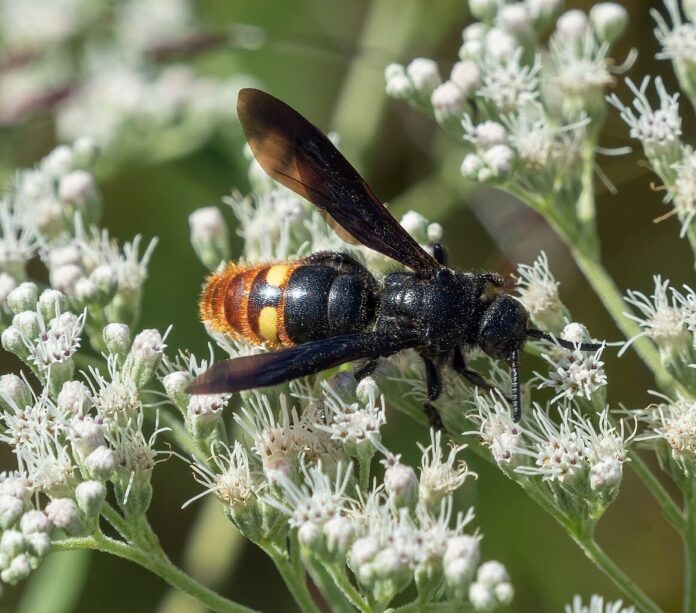
The ranges of the blue-winged wasps are in the United States, from New England all the way to Florida. They prefer temperate habitats where they can burrow into soil to find grubs. So, it is very common to find them in fields, lawns, or meadows where grubs are abundant and easy to find. Adults only feed on flower nectar, so the habitat preference is beneficial for both the parents and the larvae. While sounding very ferocious, blue-winged wasps are very helpful in controlling grub infestation. On top of that, they are also great pollinators of garden plants and native flora as well. They are able to sting, but only to defend themselves. Solitary wasps are usually docile, and these wasps fall prey to birds and other predatory insects.
Related Post: Colorful Wasps You Should See

